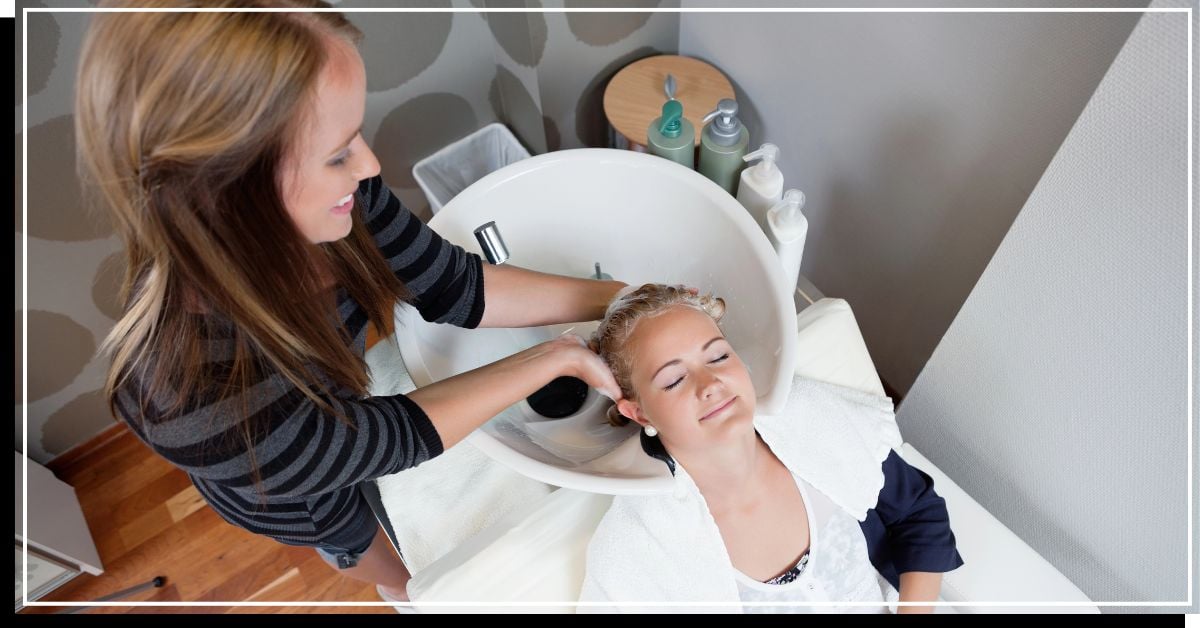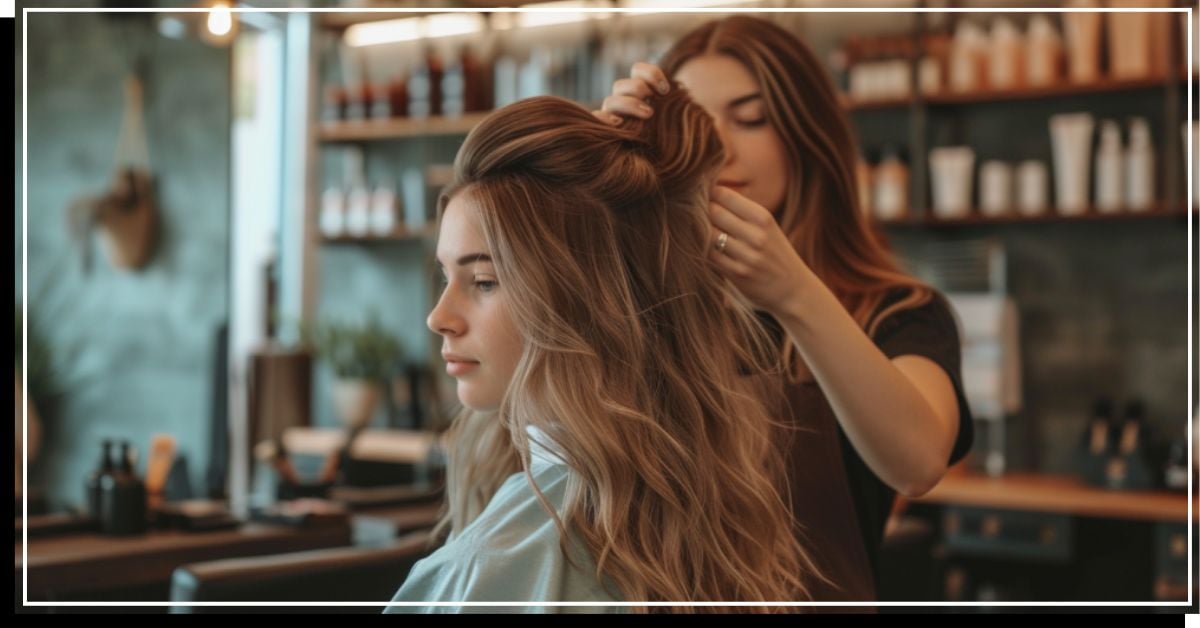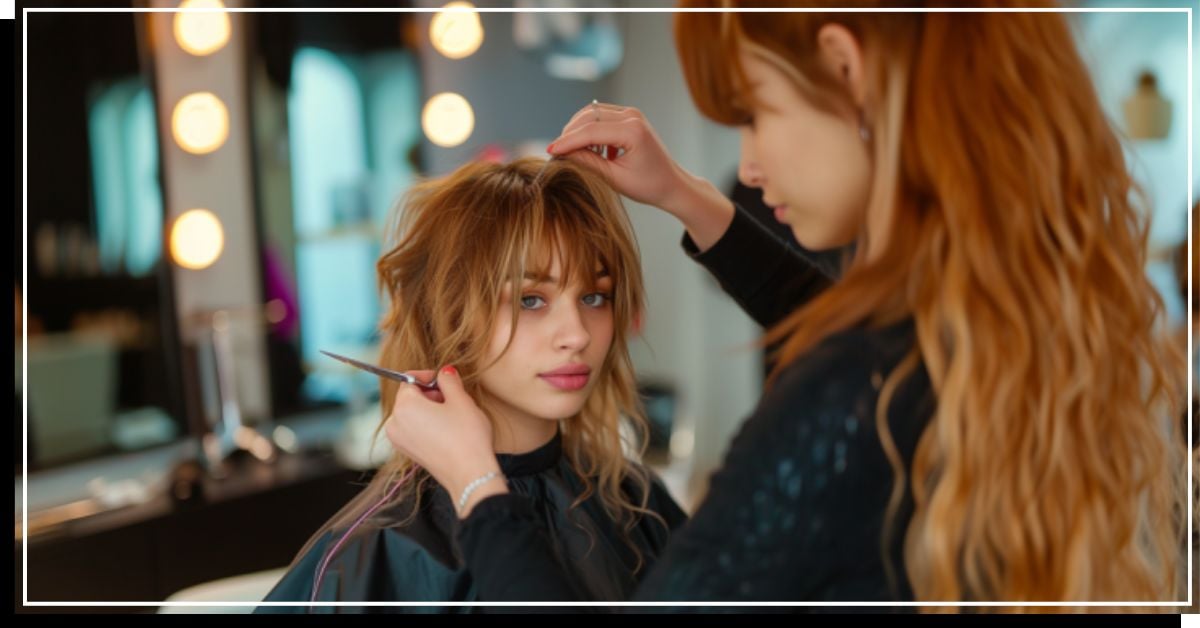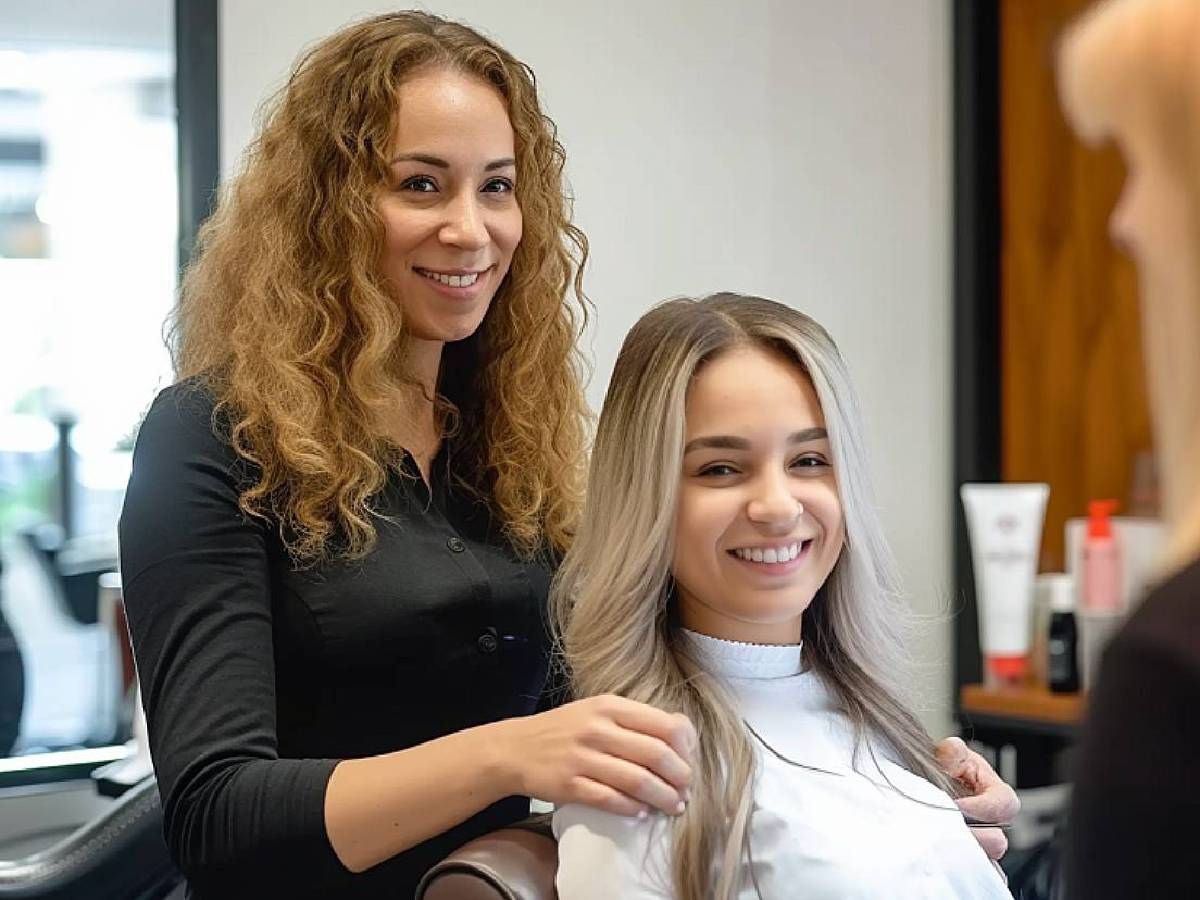Navigating the world of salon etiquette can sometimes feel like decoding a complex puzzle. I’m often asked, “How much should I tip my hairdresser?” It’s a great question, and truth be told, it’s about more than just numbers. Tipping is a subtle art that reflects appreciation for a stylist’s time and skill.
A standard 20% tip has become the go-to, but I’ve found that the joy in a client’s eyes and the relationship built over time can influence that percentage. Whether you’re splurging on a $100 hair color or investing in a $200 transformative cut, the tip you leave should echo the value you’ve received.
But here’s the twist: what if we looked beyond the usual tipping advice? Let’s explore how the tipping you do can impact the industry and your future appointments. After all, a tip isn’t just a transaction, it’s a statement.
What if you can’t afford to tip your hairdresser?
Everybody loves looking and feeling their best after a trip to the salon. However, there might be times when things are tight, and it seems daunting to add a tip on top of the cost of the service. I know firsthand that it can be a sticky situation when you can’t afford an extra percentage for the stylist.
If you find yourself in this bind, communication is key. Approach the situation with honesty. It’s okay to explain to your hairdresser that you’re on a tight budget. Many stylists understand and appreciate your frankness. Plus, they’d prefer to maintain a good relationship with a client than lose one over a tip. You might be wondering, “What can I do instead of a cash tip?” Here’s what I suggest:
- Praise their work: A genuine compliment goes a long way.
- Refer friends: Word-of-mouth recommendations are gold in the salon industry. If you bring in new clients, it’s often seen as valuable as a monetary tip.
- Book your next appointment: This shows your stylist that you value their service and want to come back.
- Leave a positive review: Social proof can boost a stylist’s reputation and attract new business, which can be just as beneficial as a tip.
Keep in mind that tipping is a gesture of gratitude. If you’re short on cash, consider other ways to express your appreciation until your budget allows for that extra monetary thank you. Don’t let the tipping etiquette deter you from treating yourself to a hair service that you need or want. Remember, a hairdresser would rather keep you as a client than not.
Plan for future visits by factoring in the cost of the tip. Additionally, if you had to skip the tip due to budget constraints and find your situation has improved by the next visit, you can always tip a little extra to make up for the past. This gesture shows that you value their expertise and the service they provide.
Should I tip a hairdresser even if I don’t like my hair?

We’ve all been there. You’re staring at the mirror, and the reflection doesn’t showcase the cut or color you envisioned. Dissatisfaction can chill the tipping enthusiasm, but here’s what I’ve learned: Tipping is still in play. It’s a complex situation where etiquette and emotions intertwine, but the underlying guideline remains firm—tipping is about appreciation.
When your hair outcome isn’t to your liking, consider a tip that aligns with the level of service. 20 percent is golden for stellar results, but an 18 or 15 percent tip can be your measure for less-than-perfect scenarios. However, transparency is the best policy. If something’s off, communicate before you reach for your wallet. Stylists often welcome the chance to make things right, turning a potential tip reduction into a deserving standard of gratitude.
- 20% for great service
- 18-15% for satisfactory or below service
Communication and Tipping Etiquette
Salon visits aren’t transactional rendezvous; they’re an investment in a relationship. A good stylist-hop isn’t just about the snip-snip—it’s about comfort, the cup of coffee they offer, the clean and sanitized station, and, at times, the therapeutic conversation. They wear multiple hats, metaphorically — stylist, confidant, therapist. Especially in times of heightened health concerns, like during flu seasons or COVID, the extra mile they go matters significantly.
My rule of thumb has evolved with these understandings. Showing appreciation for a stylist’s dedication and time holds irrespective of being thrilled or disappointed with the outcome. It’s a balance between reflecting your feelings about the service and acknowledging the effort.
Do you tip a hairdresser’s assistant?

When visiting a salon, you’ll notice the bustling environment and the various people who contribute to your experience. One key player behind the scenes is the hairdresser’s assistant. They’re the ones who often mix the color for your highlights, wash your hair, and may even assist in blow-drying and styling. Their hard work and dedication to enhancing your salon visit should not go unnoticed.
In my experience, it’s pivotal to ask the salon’s policy on tipping. Some hairdressers will pool tips and distribute them to their assistants. But it’s always a good idea to clarify this because, at times, tipping individually might be the preferred or more impactful method. It’s a small action that ensures each person who contributed to perfecting your look is appreciated.
Deciding how much to tip can be a gray area. I’ve found that tipping the assistant at least $5 to $10 is a generous start. If they’re more involved in the process, say applying color or providing a more intensive form of styling, it seems fitting to consider a higher tip. Remember, these professionals often juggle multiple tasks simultaneously and play a substantial part in the outcome of your service.
Consider this: unlike many other professions, stylists and their assistants usually don’t have the same benefits like healthcare or paid time off. Each day of work is crucial for their earnings. When they miss a day, they lose income. Their commitment to the salon’s operation and to us, the clients, frequently involves overtime and weekend shifts. It’s not just about rewarding good service; it’s about supporting the individuals who serve us tirelessly—those who make our salon experiences relaxing and fulfilling.
Whether it’s an intricate balayage or a simple trim, tipping reflects our appreciation for their skill and time. It’s more than a monetary gesture; it’s an acknowledgment of their profession’s hidden challenges and the personal touch they add to our lives. I make it a point to ensure my tip matches the level of service I’ve received, and that includes any assistant who plays a role in my salon journey.
Should I tip my hairdresser in cash or card?

When I’m at the salon, figuring out whether to tip my hairdresser in cash or via card can be a bit of a dilemma. Based on industry insights, the preferred method of tipping does indeed vary. Some stylists appreciate the immediacy of cash, as it ensures they receive the full amount of gratuity without any delays. Others, however, have no problem with card tips, equipped with modern point-of-sale systems to accept them. It’s clear that both methods have their own merits, depending on the situation.
I’ve learned that while cash is often the favored option, 20% of the total cost is the standard tip, regardless of the form it comes in. Renegar points out the equality of time and effort a hairdresser puts in, irrespective of any discounts one might receive. Therefore, if I’m given a cut at a reduced price, the tip should reflect the true value of the service.
Here’s the interesting part: cash tips sidestep credit card fees. Employers normally pay a fee of around 3% for every card transaction. Here’s what that means for a $20 tip:
Credit Card Fee Original Tip Actual Tip Received 3% $20 $17
This reality makes me more inclined to carry cash for tipping. But let’s say cash isn’t an option during my visit—Renegar suggests compensating for that loss by increasing the tip on my card or using digital wallets like Venmo, Apple Pay, or Zelle, which are growing in popularity.
Remember, the hassle isn’t just for me; stylists prefer ease and immediacy as well. That’s why I’ve made a mental note to either hit the ATM before my appointments or call ahead to confirm which payment methods are accepted at the salon. Tipping through Venmo or PayPal could also be quite convenient, especially in our increasingly digital world. And it saves me that awkward extra trip back to the salon because I forgot to bring cash—something I’m sure we’ve all experienced more than once.
Do you tip when they fix your hair?

When my hairdresser goes above and beyond to correct a cut or color that didn’t meet my expectations, I’m often faced with the question of whether or not to tip. Let’s tackle this issue with the understanding that a stylist’s effort to remedy a situation reflects their commitment to customer satisfaction and their professional integrity. If they’ve made significant efforts to fix the issue, a tip is certainly warranted.
In these cases, I’ve learned it’s customary to maintain the standard 20% tip if you’re ultimately pleased with the outcome. It’s a sign of gratitude for the stylist’s time and expertise, especially when they’ve gone out of their way to make things right. Remember, their work isn’t just about cutting or coloring; it’s about providing a service that enhances your confidence and appearance.
However, if you’re still not satisfied after the fix, it might be worth considering a lower percentage. A tip of around 15-18% can be appropriate in this scenario. What’s vital here is communication with your stylist about what you’re not happy with before leaving the salon. This gives them a chance to understand your concerns and address them promptly.
- 100% satisfied with the correction: Tip 20%
- Satisfied but with reservations: Tip 15-18%
- Not satisfied despite the correction: Communicate clearly, consider tipping at your discretion
Factoring in the complexity of your request or personal challenges (like showing up late or rescheduling last minute) that the stylist accommodated also plays a role in deciding the tip amount. In those cases, tipping towards the higher end of the scale can reflect your appreciation for their flexibility and skill.
It’s about fair compensation for the work done and the service provided. Ultimately, tipping after a fix isn’t just about the correction itself—it’s about valuing the entire experience and the stylist’s dedication to ensuring you leave with a smile.
Should you tip for a free bang trim?

Deciding on a tip for complimentary services, such as a free bang trim, can be a bit tricky. After all, I’m not being charged for the service itself. However, generosity goes a long way toward showing appreciation for someone’s time and expertise. For these types of services, I find that a tip of $5 to $10 is a respectful gesture. It acknowledges the stylist’s professional skill and the time they have carved out of their busy schedule to accommodate my needs.
Why consider tipping even for a freebie? My stylist is essentially providing a service without directly increasing their revenue for that time slot. A quick trim might seem like a small task, but it still requires the use of tools that need maintenance, and let’s not forget the stylist’s expertise. I always think about the effort and dedication that goes into every snip that ensures my bangs frame my face just right.
Sometimes, I’m tempted to wave off the idea of tipping for a complimentary service, but then I remind myself that even a free bang trim is part of the overall salon experience. It’s a touch-up that keeps me looking polished and, quite frankly, saves me from the annoyance of overgrown bangs. It’s a benefit that adds value to my relationship with the salon, which is why I lean towards giving a tip.
When the salon owner steps in and wields the scissors, the same etiquette applies. Despite their status, they’re providing a service, and they, too, appreciate recognition for their work.
A good rule of thumb is to tip at least 20% of what the service would typically cost, but if you’re particularly thrilled with their handiwork, feel free to increase that amount. Tipping is not just about the money; it’s a token of gratitude for the personalized attention to detail and the welcoming atmosphere that had me leaving the salon with a bounce in my step.
Do you tip hair salon owners?

When it comes to tipping etiquette in hair salons, there’s a particular question I find my readers often ponder: Should you tip the owner of the salon? This topic can be tricky since traditional customs have evolved significantly over the years. The once-common practice of not tipping salon owners is, frankly, outdated. Today, regardless of whether your stylist owns the salon or not, tipping is a courteous way to recognize their expertise and effort.
Salon owners often hold the title of master stylists, and though they might have a slightly elevated price point, it’s generally not drastically different from that of their employees. This shift in the industry means that the custom of withholding tips from owners doesn’t hold up any longer. Let’s dissect the reasons behind the change and how to navigate this aspect of salon etiquette.
For starters, a tip is a direct way to express satisfaction and gratitude for the service received. Even salon owners appreciate this token of recognition. As someone with an insider’s perspective, I’ve learned that tips can account for a large portion of a salon professional’s take-home pay, and this includes the owner, especially if they’re actively working with clients.
If you’ve experienced exceptional service or you’re especially pleased with the outcome of your visit, tipping the salon owner is a generous way to show your appreciation. Though the industry doesn’t set a hard and fast rule on amounts, sticking to the standard of 20% is a good practice. However, if the salon owner has gone above and beyond, don’t hesitate to increase the amount.
Remember, happiness with your hair is worth the gesture of a tip, and this includes acknowledging the skilled work of the person who’s potentially trained the other stylists under their wing. So next time I’m asked, “Do you tip hair salon owners?” my advice is to tip them as you would any other stylist – for their time, talent, and the personal touch they bring to making sure you walk out looking and feeling fantastic.
Quick trick to calculating the tip

When I’m at the salon, I’ve got one easy trick up my sleeve that always helps me tip quickly without pulling out a calculator: the doubling method. Let’s say my haircut costs $60.00—figuring out a 20% tip is super simple. I just find 10% of the total first, which is $6.00 by moving the decimal place over to the left once. Then, I’ll double that amount to get $12.00, which is exactly 20%. It’s quick, it’s easy, and it’s a method that works every time.
Moreover, hairdressers rely heavily on tips, often considering them a vital part of their overall earnings. Technical Artistic Director Steve Waldman notes that tips significantly influence how stylists manage their finances. With the impact of the pandemic making their job not only more complex but also riskier, tipping has become an even more critical aspect. According to Crystal L Bailey, director of The Etiquette Institute of Washington, we should be mindful of the considerable efforts hairdressers put in to ensure both their safety and ours—taking that extra step warrants a generous tip.
Here’s a breakdown of standard and above-average service tips:
Total Bill Standard 20% Above and Beyond Service 25% $25 $5.00 $6.25 $50 $10.00 $12.50 $100 $20.00 $25.00 $150 $30.00 $37.50 $200 $40.00 $50.00 $250 $50.00 $62.50 $300 $60.00 $75.00
Are there exceptions to the 15%-20% rule?
Absolutely. While the 15%-20% rule serves as a solid guideline, there are times when you might consider tipping more or less. If you’ve received service that’s far exceeded your expectations, showing your gratitude with a heftier tip can go a long way. On the flip side, if the service falls short, it’s okay to tip toward the lower end of the scale. Remember, tipping is a personal matter and reflects your satisfaction with the service provided. Trust your judgment, and you’ll be sure to leave the salon with both your hair and your conscience feeling great.
